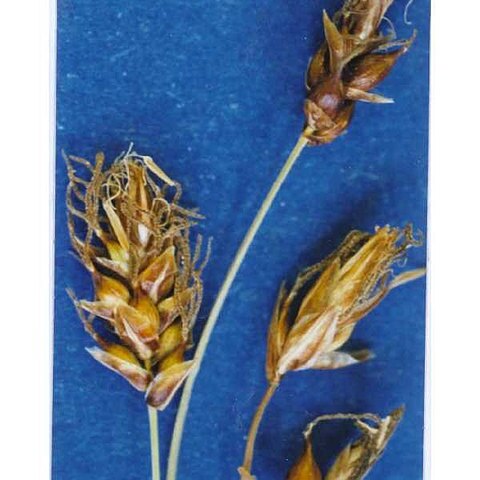Stems (0.5–)1–1.5(–2) dm, scattered on long rhizomes; lvs crowded toward the base, slender but ± flat, (0.5–)1–1.5 mm wide; spike 1, androgynous, bractless, mostly 8–15 mm, the upper half or three-quarters staminate; pistillate scales ovate or lance-ovate, sharply acute or cuspidate, from a little shorter to a little longer than the perigynia; perigynia few, mostly 1–6, ascending, plump, ellipsoid, thick-walled, obscurely to conspicuously ribbed and sulcate, usually becoming rich, shining brown, 3–4 mm including the evident, hyaline beak; achene trigonous, filling the perigynium; rachilla more than half as long as the achene; 2n=52. Dry plains and hills; w. Ont., Minn. and Nebr. to Utah, Alas., and Eurasia. If the rachilla is wanting, see sp. 88.
Culms (3–)10–20 cm. Leaves: blades 0.5–1.5 mm wide. Pistillate scales brown, with hyaline margins, lanceolate, 2.5–3.5(–4.5) mm, as wide and as long as or slightly shorter than and enclosing perigynia. Perigynia finely veined, at least in proximal 1/2, 3–3.8 mm; beak teeth firm or flexible. 2n = 52.

